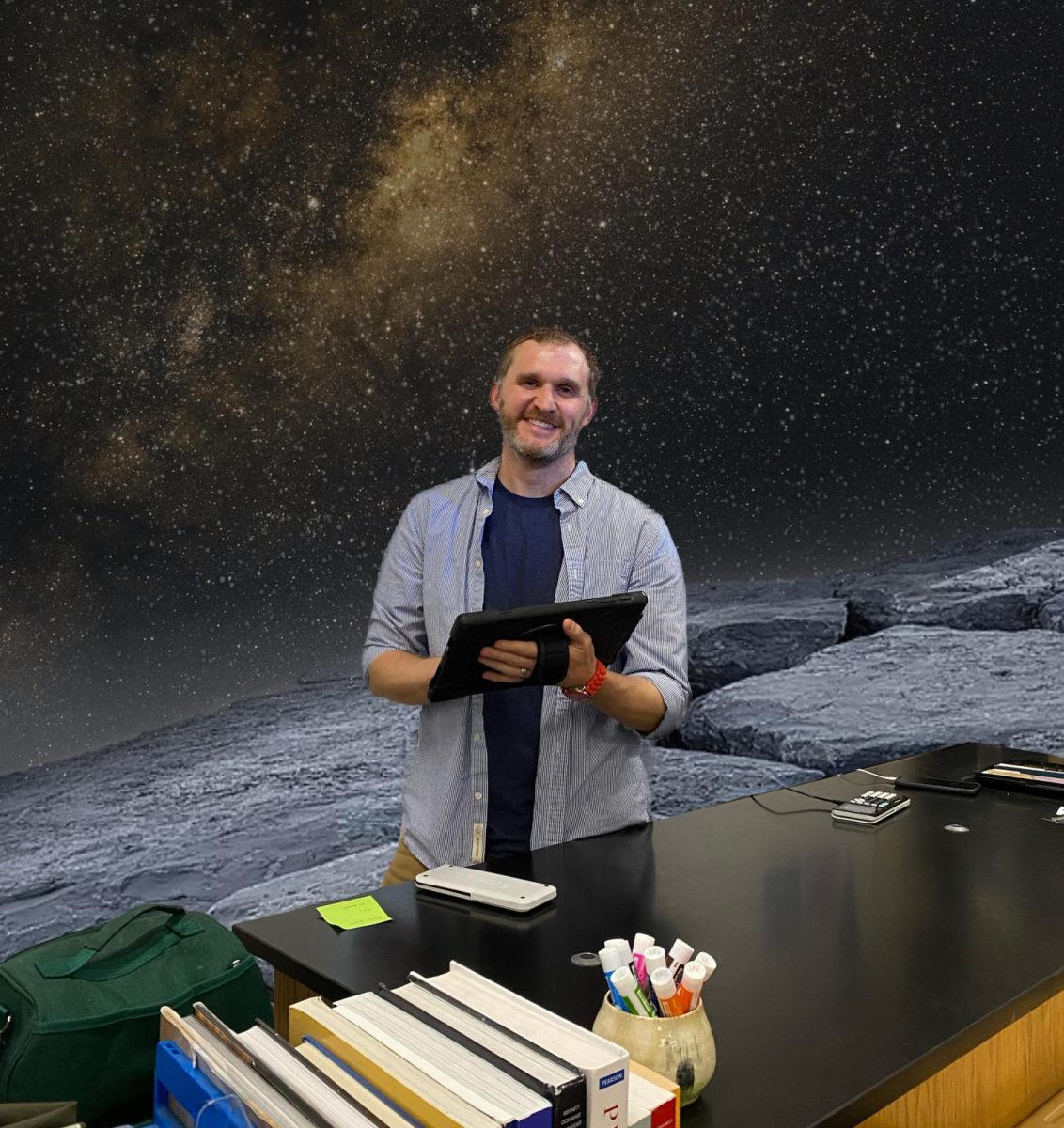The notorious AP Physics–the class Pleasant Valley students are warned about by their peers and teachers alike. Considered one of the most challenging courses offered at PV, the first unit is famous for its consequent wave of students dropping the course. Why students still decide to persevere through such a treacherous physics track can be attributed to PV’s infamously loved AP Physics teacher, Ian Spangenberg, known to students as “Mr. Spang,” who always makes sure their hard work is recognized.
“The part of the course I really like is when the last day comes–when we learn the last formula–and it’s all worth it,” Spangenberg said about the reward for the course’s challenging concepts. He believes the challenge to be the keystone of the learning process in his classroom. Not only do students walk out with extensive knowledge of physics but also with enhanced problem-solving skills, test-taking skills and greater overall confidence in their abilities.
The next greatest reward gained by students in the class is Spangenberg’s personality and teaching style. “I don’t really know what I do,” expressed Spangenberg, “I just stand here and talk about my favorite things, and students like it.”
And for many students, that is the reason the class is so fun–because they can tell he’s talking about his favorite things.
“He makes up so many jokes and talks about how cool science is and you can’t help but agree with him. It’s one of his favorite things. Many people would find it boring, but when he talks about them, it sounds so interesting,” explained senior Sammy Kruse, who chose to spend another year with Spangenberg in AP Physics 2.
Every year, dozens of students like Kruse can’t help but be exposed to Spangenberg’s contagiously amusing love for the world of physics and what Kruse describes as a “fun, relaxed yet hard-working environment.”
With such an impactful way of teaching, it’s almost surprising that Spangenberg didn’t initially want to become a teacher. After deciding to major in physics and astronomy, Spangenberg worked for three years as a paid intern at the University of Iowa Department of Physics and Astronomy researching X-ray photometry and spectroscopy. Spectroscopy refers to the analysis of the light emissions from astronomical bodies and phenomena. Spangenberg was specifically involved in the testing of the X-ray camera which would be mounted onto a rocket to capture images in space.
Although he found the experience amazing, he couldn’t help but sense something was missing. He loved being part of a team that launched rockets into space, but for most of the year he and his supervisors would sit behind a screen for daily research procedures–it just wasn’t as engaging as he’d hoped. Since he’d enjoyed being a tutor on his own time, he decided to enroll in the school of teaching.
His acute expertise finds him teaching college-level physics and, during the 2022-2023 school year, astronomy. That year was the first year the school offered the dual-credit astronomy course, but Spangenberg was unfortunately not available to teach it this year due to school growth causing an increase in AP Physics students. However, he believes the minor setback to be a good thing, as it attests to students’ interest in taking AP Physics.
PV Astronomy welcomed Scott Community College’s Dr. Robert Gregory to teach the course this school year, as over a dozen students wished to take it. The course, available to seniors or those who have taken AP Physics 1, is the result of Spangenberg’s long journey to bring astronomy to Pleasant Valley High School.
“It started when kids would come to me after AP Physics and just ask me questions about astronomy. I loved to answer those questions, it’s one of my favorite things to do,” recounted Spangenberg. As students’ curiosity over astronomy continued, he decided to make it a club. Thus began Pleasant Valley’s Astronomy Club–a space for anyone interested in learning the answers to the universe’s most enthralling questions. The club also gets the chance to engage with local astronomy clubs through “astronomy nights”–monthly observation exhibitions through telescopes at the Niabi Zoo or St. Ambrose University’s Menke Observatory.
“Bringing students out to these events,” Spangenberg exclaimed, “is awesome.” Given his amusing teaching style, it is no surprise students are so excited to spend their Saturday nights looking through a telescope and learning about space.
At its peak, the club hosted over 60 students sprawled across desks and lab tables in Spangenberg’s room. Though numbers have dwindled since the pandemic, he’s excited this year to see many non-physics students attending the club as well, promising growth for his beloved club among new generations of spartans. The next astronomy night, which will take place on Oct. 14, will hopefully welcome many students newly enthralled by astronomy through Spangenberg’s vibrant club lectures.
Spangenberg’s overwhelming impact on students and his strong passion for what he teaches have set him apart as a deeply influential figure for Pleasant Valley students. Spangenberg gives credit to the college professor who so engagingly opened his eyes to the world of physics, saying, “It only takes one teacher.” Through enthralling lectures, a positive environment and incredible attention and care for his students, Spangenberg has become that “one teacher” for countless PV students.
“In my first year of AP Physics, Spang showed an episode of Forensic Files that used physics to solve a problem,” Kruse explained. “I told Spang after class that I loved the show and thought it was super cool. That night I got an email from him telling me that he got in touch with a college visiting PV that had a great forensics program. While I don’t plan on going to that particular school, the visit made me realize that this is the career for me. I owe that to Spang.”
Spangenberg’s teaching transcends the boundaries of physics and astronomy, touching the hearts and minds of students of all interests. Like the ever-expanding universe, PV students’ passion for physics and astronomy will only keep growing, reaching new stars and galaxies, all thanks to ‘Spang’.









